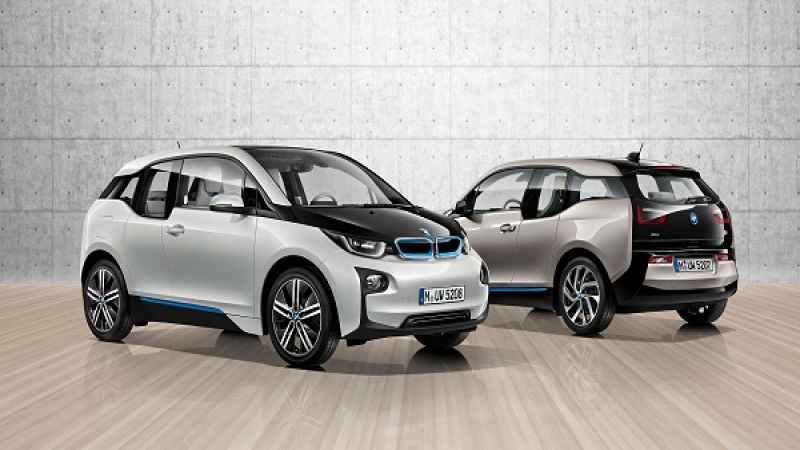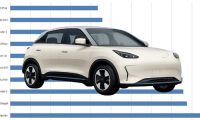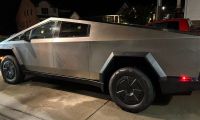When BMW set out to make an electric vehicle, they didn’t just shove a battery pack into a conventional car platform. The German automaker went back to the drawing board, even more so than Tesla, and came up with a radical new design.
The i3 is constructed of a carbon fiber reinforced plastic (CFRP) passenger module riding atop a largely aluminum chassis. It is the most carbon fiber-intensive volume production car on the road today.
The clean-sheet design allowed BMW to package the relatively small (19 kWh) battery flat in the floor, giving the designers and engineers a great deal of freedom. The 170-hp electric motor rides discreetly between the rear wheels, and the structure leaves enough room for a small optional 680cc two-cylinder range-extending gasoline engine.
The sales numbers
The i3 went on sale in Europe late last year and arrived in the United States in May. Though production is constrained due to the limitations of the carbon fiber supply chain, BMW has made an enormous investment to reduce this bottleneck and has been able to ramp production from 70 vehicles per day to 100 vehicles per day.
In April, BMW announced that it expected to double the initial production expectation for 2014, from 10,000 to 20,000. Would the automaker be able to sell all those vehicles?
The short answer appears to be not quite. The i3 sold 5,396 copies worldwide through the first half of the year, which at first glance does not lend much confidence in the 20,000 target. However, that figure largely does not include U.S. sales, which have picked up substantially in recent months.
After selling just 1,057 units in the first three months combined, the i3 has since caught fire (metaphorically, of course). Partly attributed to reasonable lease deals, the spunky EV improved to 1,025 sales in August, 1,022 in September, and 1,159 in October. Combined with the i8 supercar, BMW plug-ins actually accounted for 5.4% of total BMW sales in the U.S. last month.
At the end of October, the i3 surpassed 10,000 sales globally. Coupled with BMW’s concurrent claim that about 100 i3s were being sold daily, we can project that somewhere around 16,000 will be sold on the year when the calendar flips to 2015. Quite a respectable total for the i3, and one BMW will hope to build upon next year.
How many have the range extender?
The question everyone is asking: how many i3 sales are the range-extended REx version? The answer to this question tells us how many buyers feel they need the extra 70 or so miles of gasoline backup range, despite the $4,000 premium, to feasibly own an 80-mile electric vehicle. (Technically, the REx version gets 72 miles of electric range and about 150 miles total while the EV-only model achieves 81 miles on a charge).
InsideEVs reported that BMW claimed the ratio to be about 60/40 in favor of the REx in the United Kingdom, which is about what the U.S. split is believed to be. It will be interesting to see if that number changes as more i3s hit American roads, but for now it appears that a slight majority prefer the security and extra range of a gasoline backup.













Comments
The range extender also
Permalink
The range extender also provides better heating performance. This is an important consideration if you live in a cooler climate.
It's $52,550 as tested and is
Permalink
It's $52,550 as tested and is an extremely limited vehicle. People need a vehicle to do all things, not some sort of well requiring another car to do other things. If going green is the goal - I'm not convinced it's anything more than a marketing gimmick, for profit scheme (way to charge you more for less) and a way to control people, but... if that's the goal how does this help? It's a waste of resources. One car to do everything is better than two cars any day. While I am on the subject the big white elephant in the room is that baby seat in the back of many cars. That little human being is the problem, not my car. So you see driving a hybrid with a baby seat in the back down to Walmart to buy goods made in the pollution capital of the world China DOESN'T help anything. Not to mention those cargo ships that bring those goods over. 15 pollute as much as all the cars in the world in one year. Think about that.